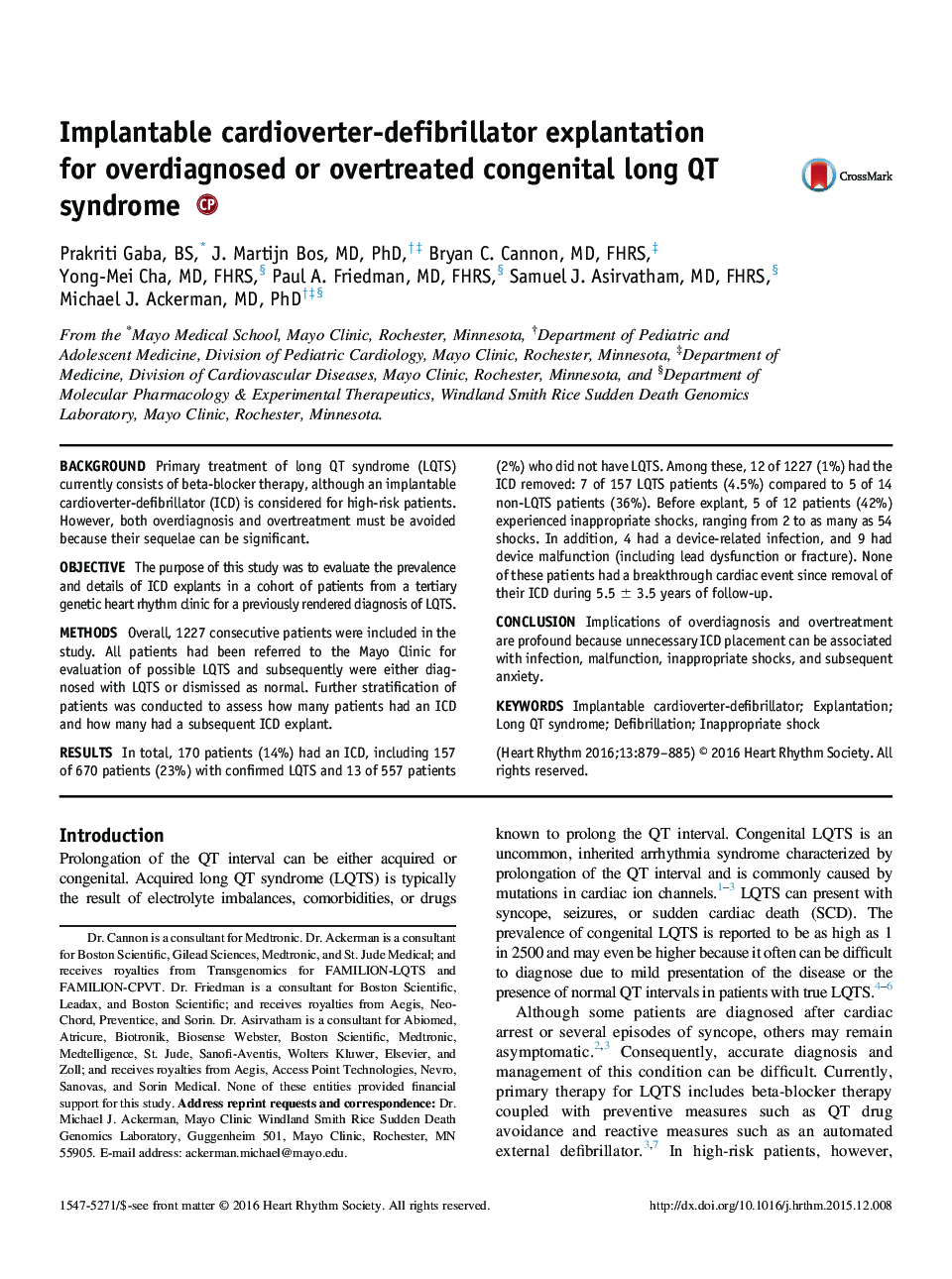| Article ID | Journal | Published Year | Pages | File Type |
|---|---|---|---|---|
| 2921831 | Heart Rhythm | 2016 | 7 Pages |
BackgroundPrimary treatment of long QT syndrome (LQTS) currently consists of beta-blocker therapy, although an implantable cardioverter-defibrillator (ICD) is considered for high-risk patients. However, both overdiagnosis and overtreatment must be avoided because their sequelae can be significant.ObjectiveThe purpose of this study was to evaluate the prevalence and details of ICD explants in a cohort of patients from a tertiary genetic heart rhythm clinic for a previously rendered diagnosis of LQTS.MethodsOverall, 1227 consecutive patients were included in the study. All patients had been referred to the Mayo Clinic for evaluation of possible LQTS and subsequently were either diagnosed with LQTS or dismissed as normal. Further stratification of patients was conducted to assess how many patients had an ICD and how many had a subsequent ICD explant.ResultsIn total, 170 patients (14%) had an ICD, including 157 of 670 patients (23%) with confirmed LQTS and 13 of 557 patients (2%) who did not have LQTS. Among these, 12 of 1227 (1%) had the ICD removed: 7 of 157 LQTS patients (4.5%) compared to 5 of 14 non-LQTS patients (36%). Before explant, 5 of 12 patients (42%) experienced inappropriate shocks, ranging from 2 to as many as 54 shocks. In addition, 4 had a device-related infection, and 9 had device malfunction (including lead dysfunction or fracture). None of these patients had a breakthrough cardiac event since removal of their ICD during 5.5 ± 3.5 years of follow-up.ConclusionImplications of overdiagnosis and overtreatment are profound because unnecessary ICD placement can be associated with infection, malfunction, inappropriate shocks, and subsequent anxiety.
